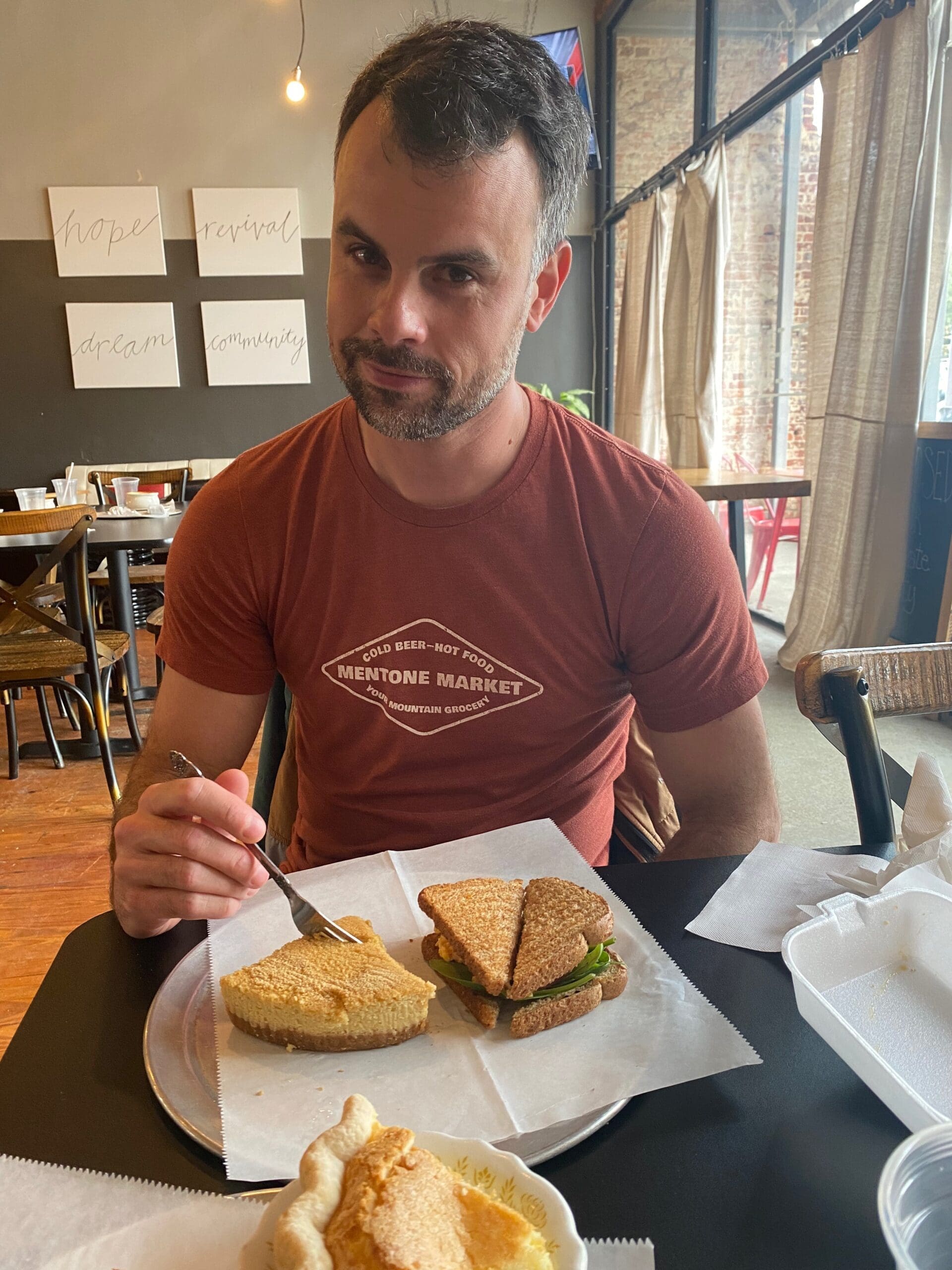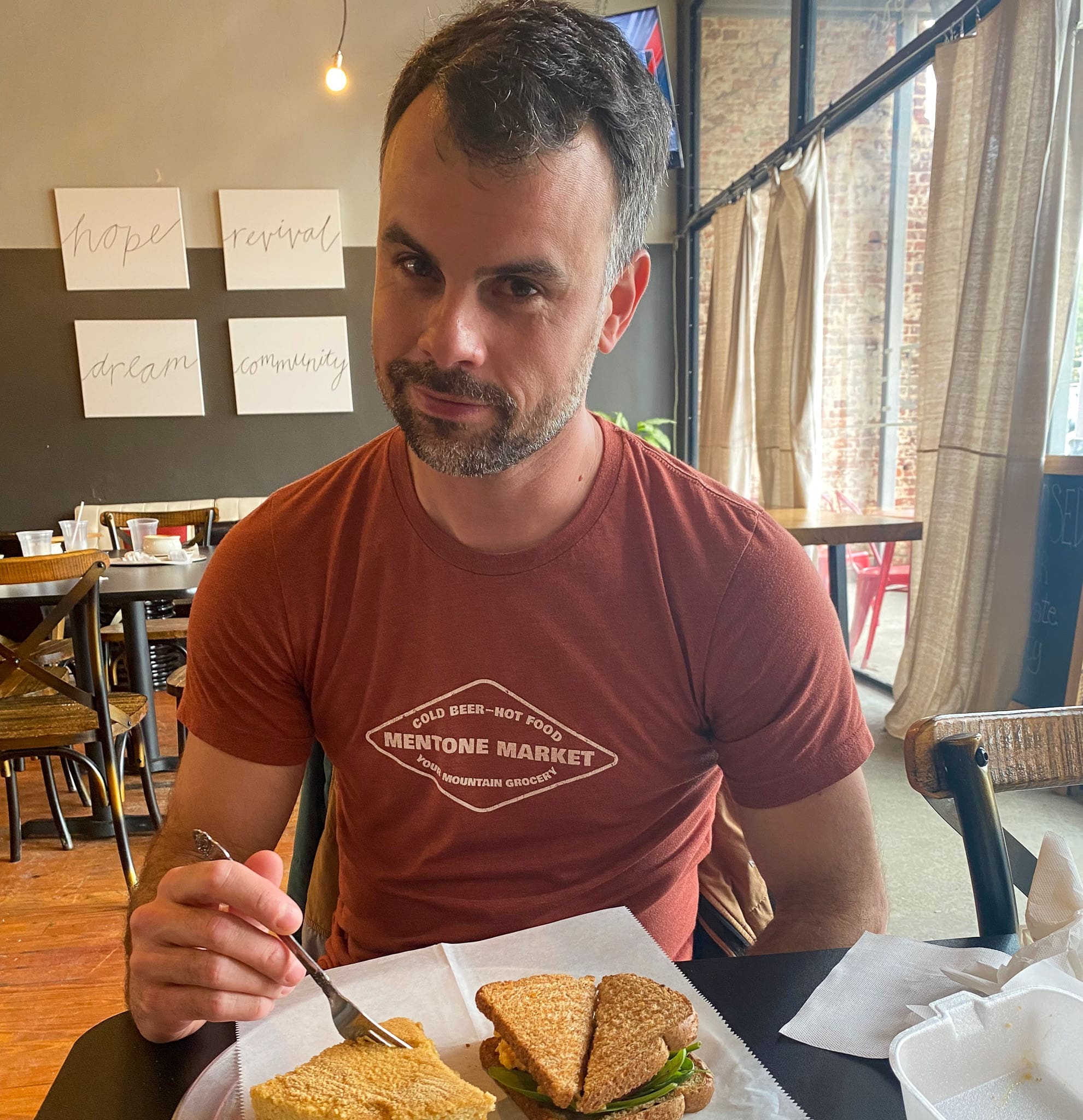Photos by Wesley Miller and Harrison Neville
New to The Alabama Ramble?
Here’s why Wesley wanders the state and reports back with this column.
If you’ve spent a decent amount of time outside of the South, then you’ve probably noticed that people who aren’t from here don’t think much of Alabama. When asked why, they generally have little to offer beyond a vague prejudice rooted in what they know from the 1950s. Tellingly, I have yet to meet a critical outsider who has actually been here.
Because here’s the thing: Alabama is a place of wonders.
We are, for example, the most biodiverse state in the country — and no one else even comes close. We house the decaying remains of one of the most globally prosperous — and infamous — civilizations in recent human history. We also offer the traditional cosmopolitan comforts — arts, entertainment and some of the best food in the country — all without big city traffic. Shoot, we’re even the only state with an alcoholic drink, and a moonshine at that, as our official state beverage.
None of this is to say that we’re perfect. We’re not. But while there are things we can do better, there is quite a bit that we do right.
The purpose of this column, however, is not to win converts from anywhere else. The better we keep the secret, the less likely Birmingham becomes the next Nashville — sorry Nashville, but you know it’s true. Instead, the hope is to remind us all that we live in a special place. And with a little time and gas money, there is plenty to explore and enough adventure here to last a lifetime.

Adventures in Wetumpka, Alabama’s HGTV Boomtown
Part 2: The Surrounds
Readers of the previous installment of this column will recall part one of our adventures in the small, south-central Alabama town of Wetumpka. During my visits, I found that Wetumpka simply had too much to offer, and I couldn’t fit it all into one Ramble. So I’ve split it into two.
In part one, we wandered downtown, which recently gained international attention by starring in an entire season of HGTV’s “Home Town Takeover.” We saw sights ranging from the famous, such as HGTV makeovers and the house from the movie “Big Fish,” to the more obscure, including the “snail that saved the town” and the deli with a floor made from 177,000 pennies. We also visited the remnants of an 80,000 million year-old meteor crater and perused some world-class folk art. All that to say, we had a good time.
With downtown under our belts, we shall now embark to the hinterlands of Wetumpka. We’ll see more art, dip our feet into Alabama’s history — some long ago, some unfortunately not so much — and, once again, get Bacchanalian on the local food.
Kelly Fitzpatrick Center for the Arts

Let’s start where we left off in part one: the mysterious sculpture walk leading out of downtown.
If you turn right at the foot of the famous Bibb Graves Bridge, over which your author waxed most romantic last time, then you will find yourself on a riverfront path sandwiched between the water and a series of eclectic sculptures — such as the sentry seen above. Follow this pathway for a few minutes, and you will arrive at the doorstep of The Kelly Fitzpatrick Center for the Arts, the community hub for local art.
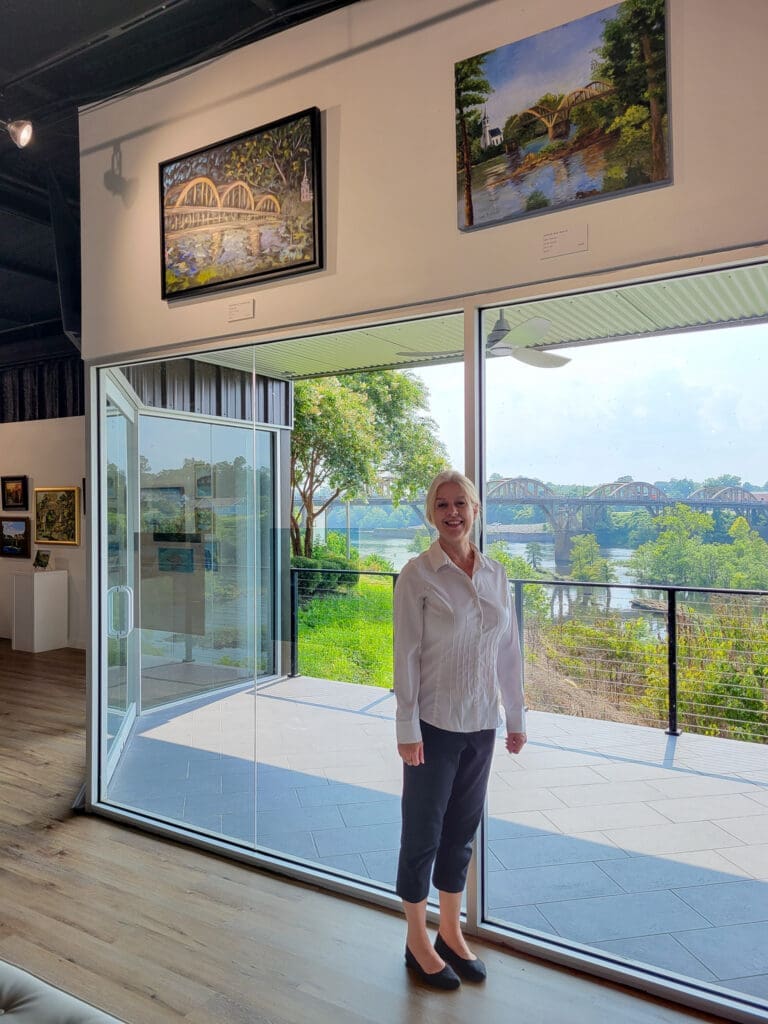
Once inside, you are likely to meet Jennifer, the executive director whose window view at work should make us all jealous. Situated next to the Coosa River, The Kelly’s new building has one of the best views of both the river and the bridge.
Remember in part one when we visited the art gallery with the South’s biggest collection of folk art? Here, at the beginning of part two, we have already taken a sculpture walk and found ourselves in another gallery — a gallery whose building renovations were entirely funded through community donations. Suffice it to say, there’s a reason that Wetumpka has been variously recognized for its outsized arts presence.

While the art at The Kelly draws inspiration widely, since the artists are local, much of it reflects the scenery of Alabama. This wall is dedicated to the bridge.
Scroll below for a sampling from the gallery.
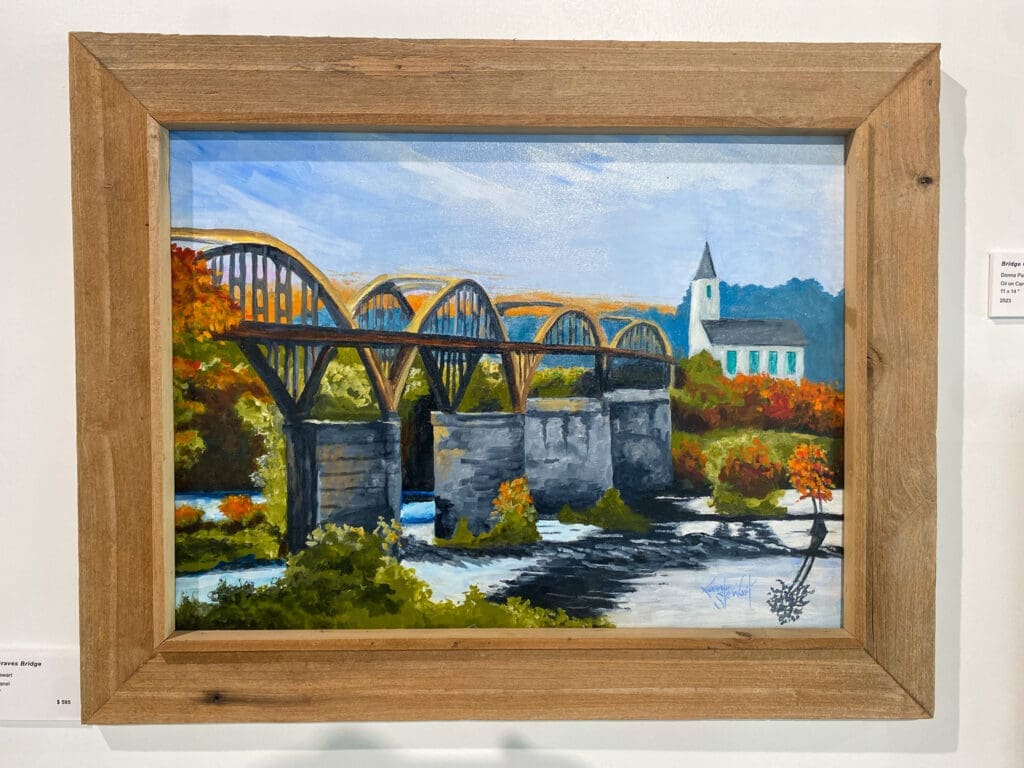

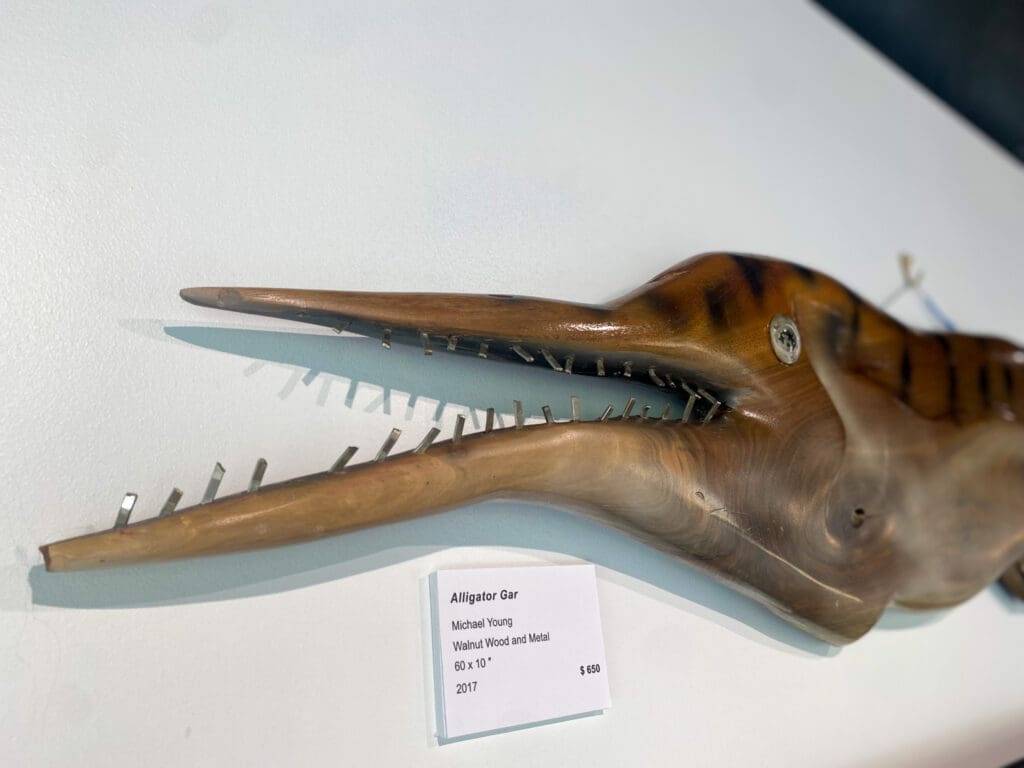


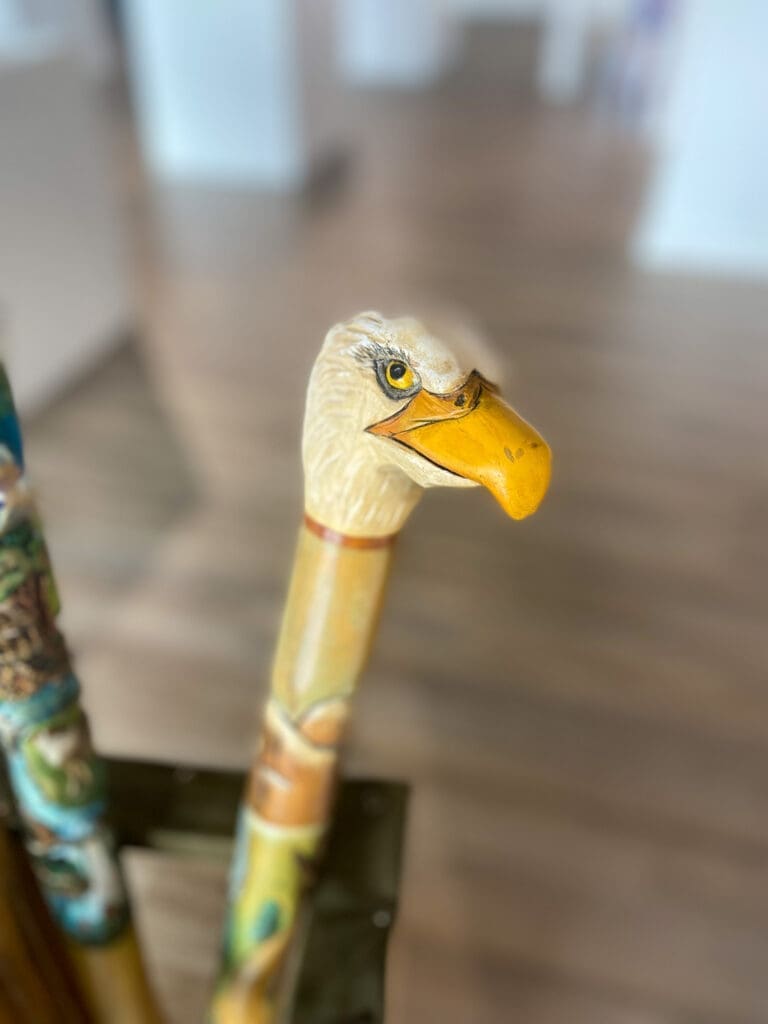
The Salad Bowl of History: Fort Toulouse-Fort Jackson Park
Head ten minutes southwest of town, and you’ll find yourself at this park, a nature preserve on the Coosa River that hosts a smorgasbord of historical hors d’oeuvres from pretty much every era of human presence.
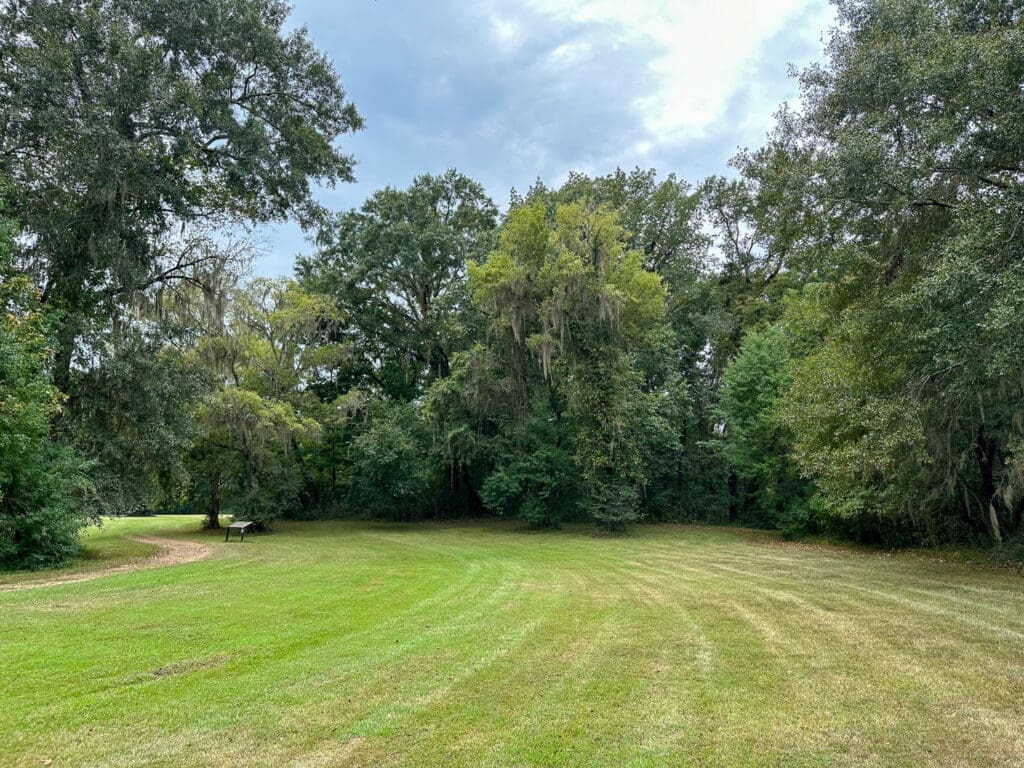
Chronologically speaking, the historical snack tray starts here. “Okay,” you might be wondering, “that looks pretty, but what even is it?” Fair.
Although it’s tougher to show the specifics in photos, a Native American mound — Mississippian, to be specific — rests at the bottom of those trees in the center. It turns out that this was the perfect real estate for projecting economic and political power in the 1400s: situated at the meeting of the Alabama and Coosa Rivers atop 40-foot bluffs that were too high to flood. The mound remains, but other traces of the village are gone.
If you visit after the leaves fall, then those river bluffs over beautiful views. And if you think this Indigenous earthen mound thing sounds cool — spoiler alert: it is — then take a look at Alabama’s official mound trail. Maybe there’s one near you.

For the low price of a quarter-mile walk, you can skip ahead a few hundred years and see how Native American folk lived in the early 1600s, following the end of the Mississippian Period.
But I’m speaking broadly here. Specifically, these are Creek dwellings. But then again, there were various groups of Creeks in Alabama. These were the homes of the Alabama, or “Alibamu,” people. And, you guessed it, this is where our state gets its name.
The two houses on the left are winter homes and, given our summers here, folks opted for the no-walls version on the right once the heat arrived.

In the early 1700s, the French, in what is now Louisiana, set up their easternmost outpost here. In order to keep out the influence of the British — although one can only assume that the French troops were still allowed to stream The Great British Bake Off — they constructed several forts here, one of which has been recreated.
While I admit to having little first-hand experience in 18th century colonial warfare, I can’t help but feel that, had I been stationed here, then I would have appreciated a little more than a fence to protect me from an advancing army. Given my druthers, I’d advocate for something more like…

…this. According to local signage, these spiked earthen walls at Fort Jackson were originally surrounded by a formidable moat as well.
This also happens to be the spot where, following Andrew Jackson’s victory in the Creek War, he and the Creek Indians signed the Treaty of Fort Jackson, thereby turning over to the United States a great bulk of the land that makes up Alabama, which became a state five years later.
History is complicated, and I don’t mean to oversimplify. Still, from the vantage point of 2023, it’s hard to summon much pride over what happened here — especially as the Trail of Tears followed a few years later. With that said, given the land acquisition, this spot is absolutely central to the history of our state.
And despite all of this happening over 200 years ago, it remains a contentious issue. Fort Jackson was built near Hickory Ground — AKA Otciapofa — the last capital of the Creek Nation before they were forcibly moved during the Trail of Tears. That land is still heavily disputed.
Let’s Eat!
Given the seriousness of the history at the forts, forgive me if this transition is a bit abrupt. Nevertheless, come midday, we’d all be lying if we said we weren’t ready for lunch.
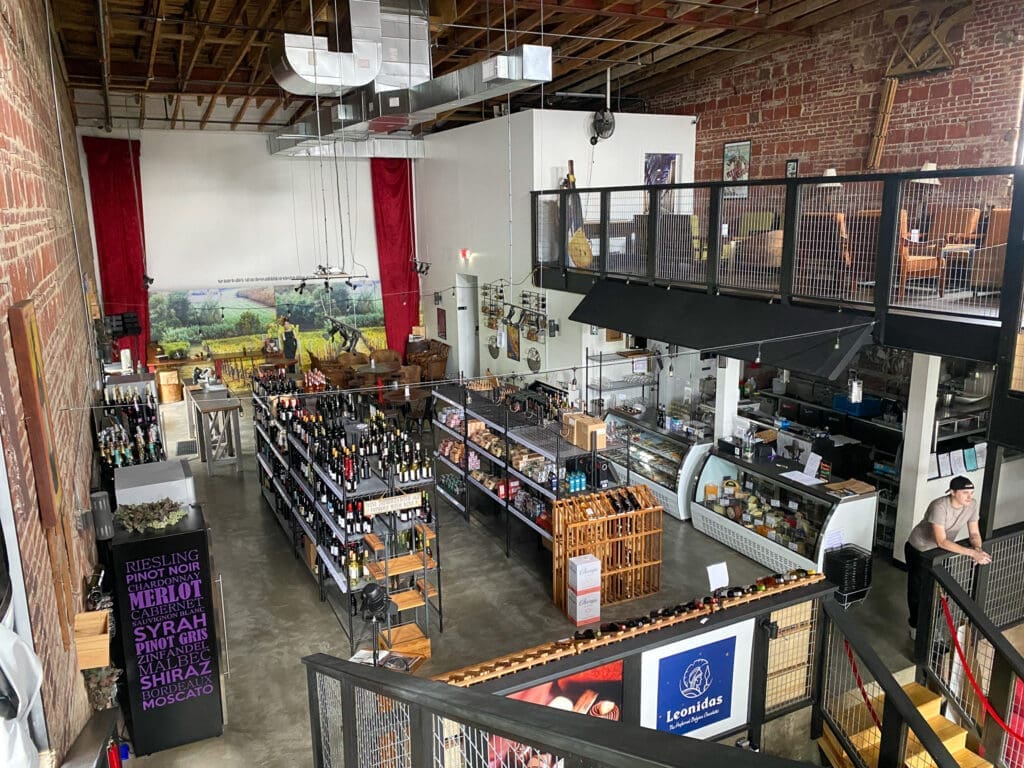
Wetumpka has many dining options. This time, let’s stop in at Taste at the Fain, which is housed beautifully in an old theater. Although a thunderstorm took their power out while we were there, we still managed to get a few photos. Assuming that the power has come back on by now, I recommend this place because…

Cheese! And wine, that is. If you read part one, then you may be thinking, “Geez. This guy already had a pastry, a latte, a sandwich, and now cheese and wine?”
Okay, so listen, in my defense, we visited Wetumpka twice. And of course, this is all for you, the readers. What is my absurd caloric intake if not a public service?
On that note…
Milkshake!

Wait. A milkshake? …and is she cutting out an entire piece of pie?!
A public service, I tell you!
Thanks to Kiley here from River Perk Coffee who made us one of their “pie shakes” which, as you have likely guessed, contains an entire piece of pie. Toss in seven scoops of ice cream and you have…

Boom! And yes, it was delicious. Whatever moments this milkshake may have shaved off of the end of my life, it was worth it.
Pro tip: we took what proved to be a wise recommendation from a local and went with the key lime pie.
A Forgotten Billionaire, Booker T. Washington, and the Black History Museum

When we first arrived in Wetumpka, I asked Shellie, the head of the chamber of commerce who famously bought the Big Fish house, to tell us her favorite local place that was not on the TV show. She didn’t hesitate, “The Black History Museum.”
The museum building is a former Rosenwald School. The “Rosenwald” refers to Julius Rosenwald, who was once the president and chairman of Sears, Roebuck and Co. Younger readers might not be familiar with the company, but it was a Chicago-based retail behemoth. It’s an imperfect comparison, but perhaps it helps to think of Sears as the Amazon of the American 20th century. At the time, Sears even built the world’s tallest skyscraper.
All that to say, one can safely assume that this Rosenwald guy wasn’t short on pocket change. And while he could have spent all that cheddar on a fleet of yachts, Rosenwald was instead deeply troubled by the plight of Black people in the South. As a Jew, he observed that prejudice was all too familiar to him.
I’ll assume that no readers will be surprised when I note that, 100 years ago, Southern states didn’t exactly prioritize funding for Black schools, especially in rural areas. At the encouragement of Booker T. Washington, Rosenwald decided to focus his efforts here.
The result? Over 5,000 schools, built in 15 years. At the height of the program, around 40% of Southern Black children attended one of these schools. It’s worth noting that Rosenwald only contributed seed money; communities had to raise funds as well.
While the Rosenwald Schools are perhaps not commonly known today, it is no exaggeration to say that it is one of the greatest contributions to Black education in the first half of the 1900s.
This school in Wetumpka, originally the Elmore County Training School, was built in 1924 and closed down in 1963, following integration. Only around 10% of the original Rosenwald schools are still standing. They have been listed on the National Trust for Historic Preservation’s list of “Most Endangered Historic Places.”
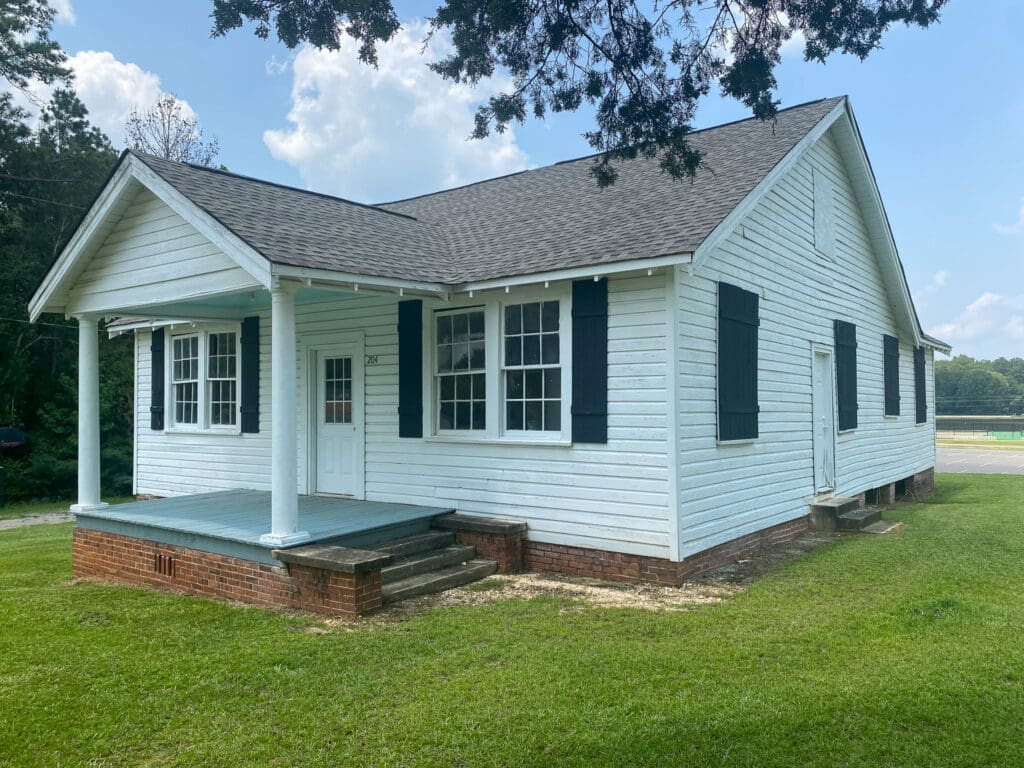
In addition to the schools, the Rosenwald Fund built 217 homes for teachers. The Elmore County Black History Museum happens to have one.
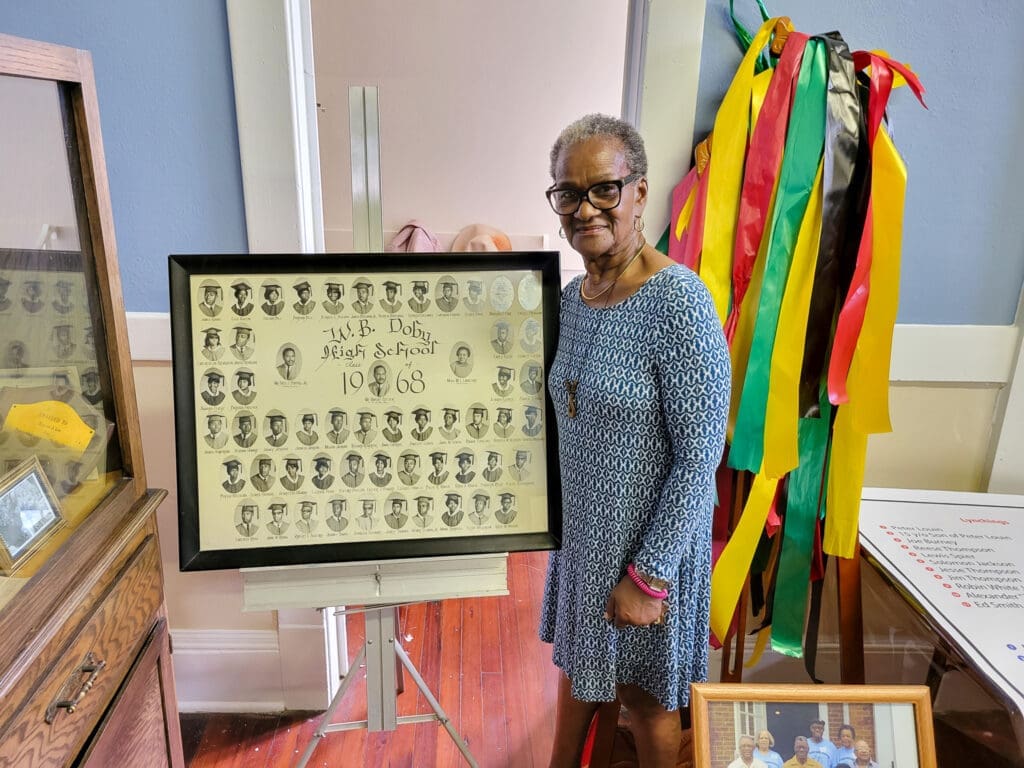
Given the moral repugnance of segregation, it can be difficult to fathom that this part of our history is so recent. Case in point: our tour guide, Miss Billie, is a former student of this school. Here she is next to a photo of her high school graduating class from W.B. Doby, where she transferred after the Rosenwald school closed. If you look closely, you’ll see her photo in the bottom right.
Miss Billie volunteered here for 22 years until she was hired on at the beginning of this year. Perhaps it goes without saying, but say it I shall: it’s not everyday that one gets to walk the halls of history with a tour guide who actually lived through it. If you stop by the museum, then she’ll do the same for you.

Miss Billie and others have spent decades tracking down relics that would otherwise have been lost to time. The collection offers a window into everyday Black life in rural Alabama, often from the Jim Crow era.



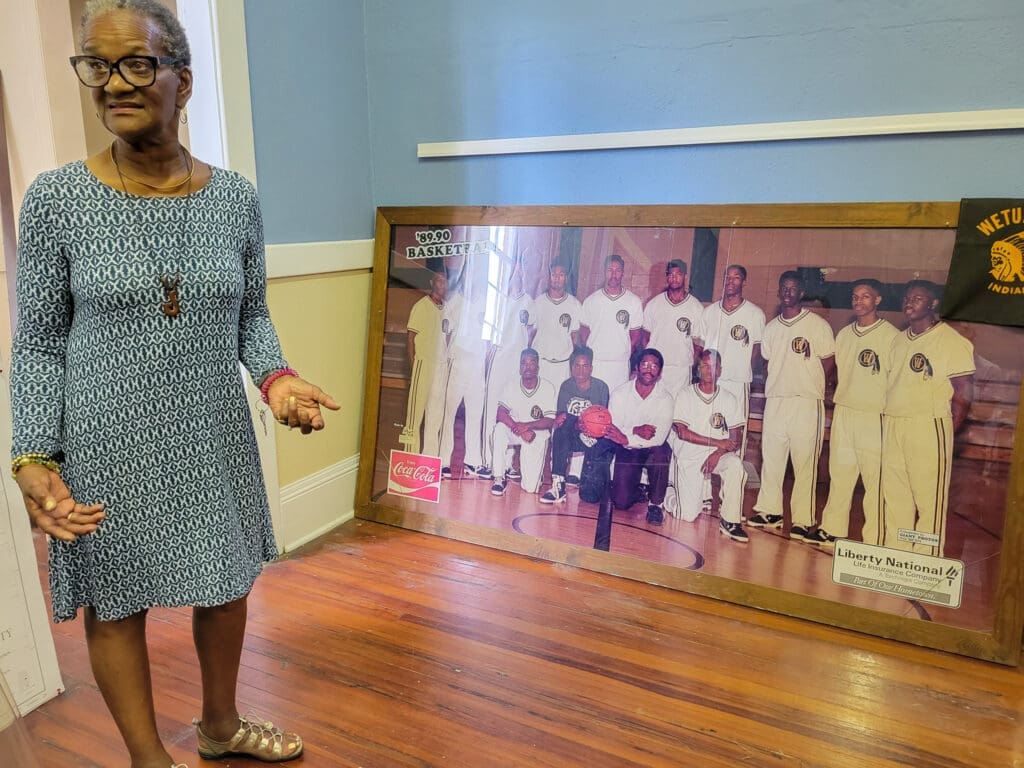
Some of the pieces, such as this one, are more recent. A little confused by why the museum had an enormous photo of the 1990 Wetumpka HS basketball team, we asked Miss Billie. And perhaps more than any other story she told, her answer captured the spirit of the museum.
In the early ‘90s, she heard that the local high school was taking down the photo of the 1990 Area Championship team because, in the words of the school employee, he “didn’t want all these monkeys on [his] wall.” Miss Billie, learning that it was to be trashed, asked if she could have it. She found someone with a truck and, after storing it on her porch for a while, eventually found a place for it at her son’s apartment.
Given the size and weight of the photo, she began to wonder if it might not be better to just take a picture of it. But then she saw the reactions of the players who, now adults, brought their families to see it. One of the young men in the photo had been killed by a stray bullet at a graduation party, and his family also visited. As she says, “They sat…and they just stared at it.” She decided then that — practical or not — she had to keep it.

See the map and that poster on the table? Miss Billie was quick to point out that this is only a draft, but she and others have been working to document all of the lynchings and attempted lynchings in Elmore County. It’s an ongoing and, suffice it to say, deeply sobering project. And there are a horrifying number of dots on that map.
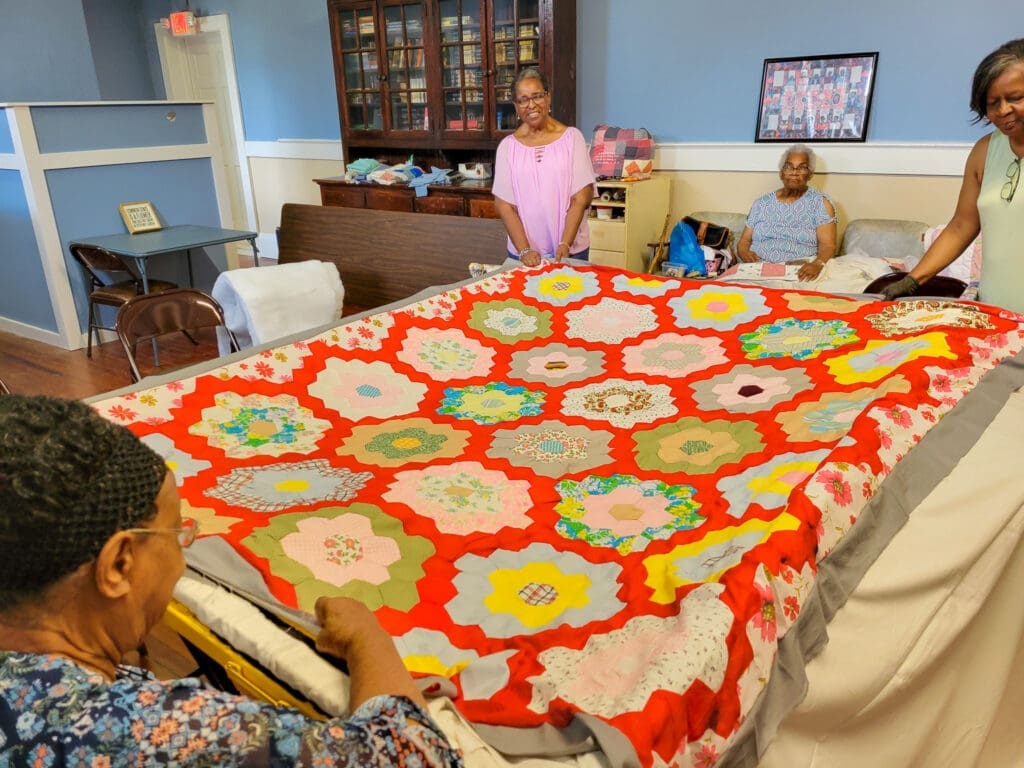
For around 20 years now, the museum has hosted Thread My Needle, a local quilting club. While it’s clearly a social get-together, the club traces their craft back to codes and maps hidden in quilt patterns, guiding escaped slaves north to safety in Canada.
Their eldest member just celebrated her 100th birthday. Miss Lacey, seated in the photo above, is 93 years old.
Separately, Miss Billie showed me a quilt that the group sewed for a family member when he was born. After 18 years of keeping him warm at night, it now shows significant wear. So the group was repairing and updating it so that he can take it with him to college.
As Miss Billie told me, “There’s a lot of love that goes into a quilt. We’re trying to pass [the craft] down and not lose it.”

To Leave, Sweet Sorrow
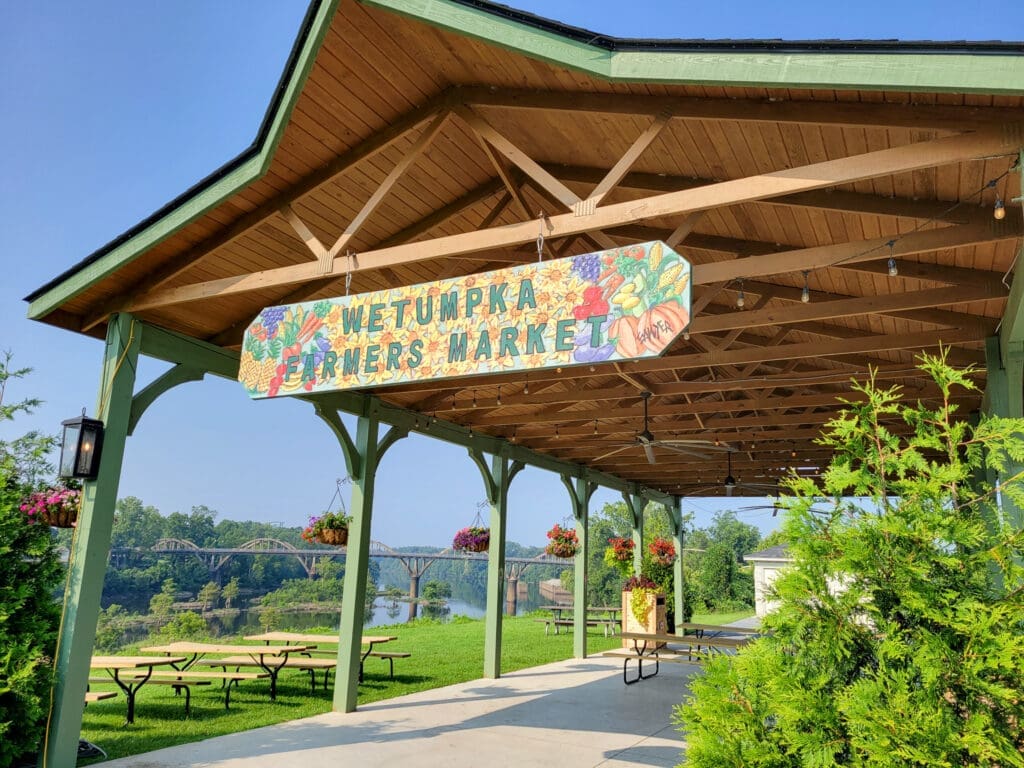
Thank you for having us, Wetumpka. As we take in our final views of the bridge, we leave with hearts both heavy and hopeful; stomachs uncomfortably, yet gloriously, full; and a weather app that still disturbingly seems to read 98℉. Next time we leave the house during an Alabama summer, we’re bringing one of these.
In case you missed part one of our adventures here in Wetumpka, the land of rumbling waters, then you can find it here.
We’re now headed north towards an Alabama mountain town that is somehow hidden in plain sight. We’ll meet you there in December when we can all enjoy cooler weather and, of course, many new adventures.
Parting Thoughts




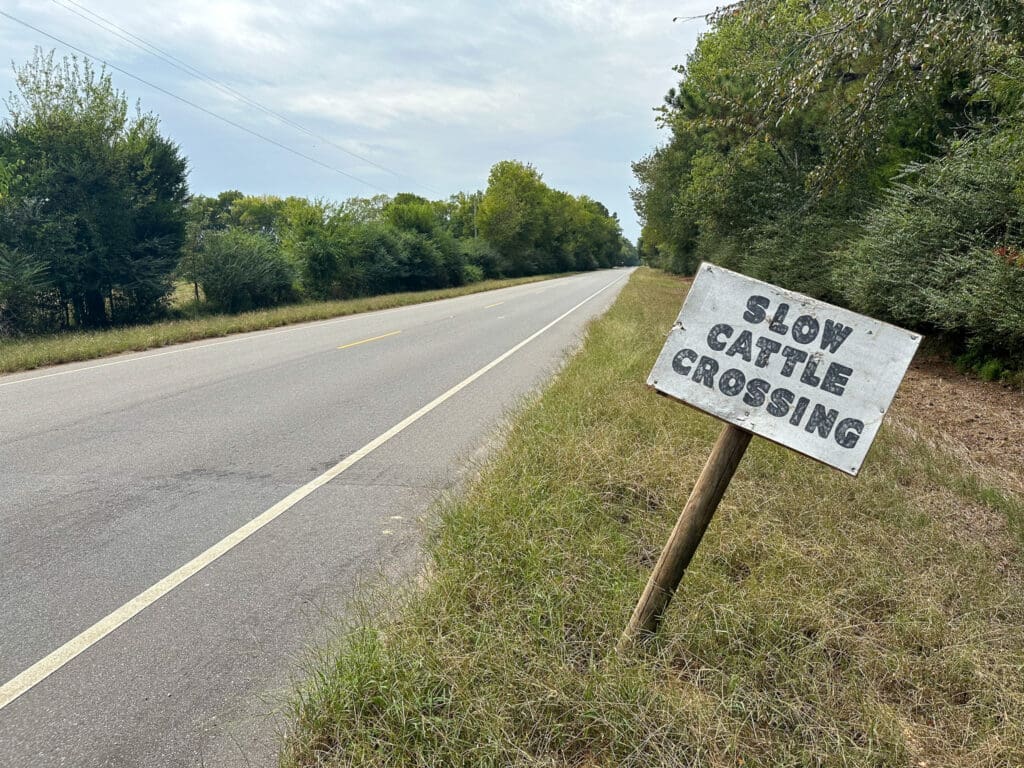
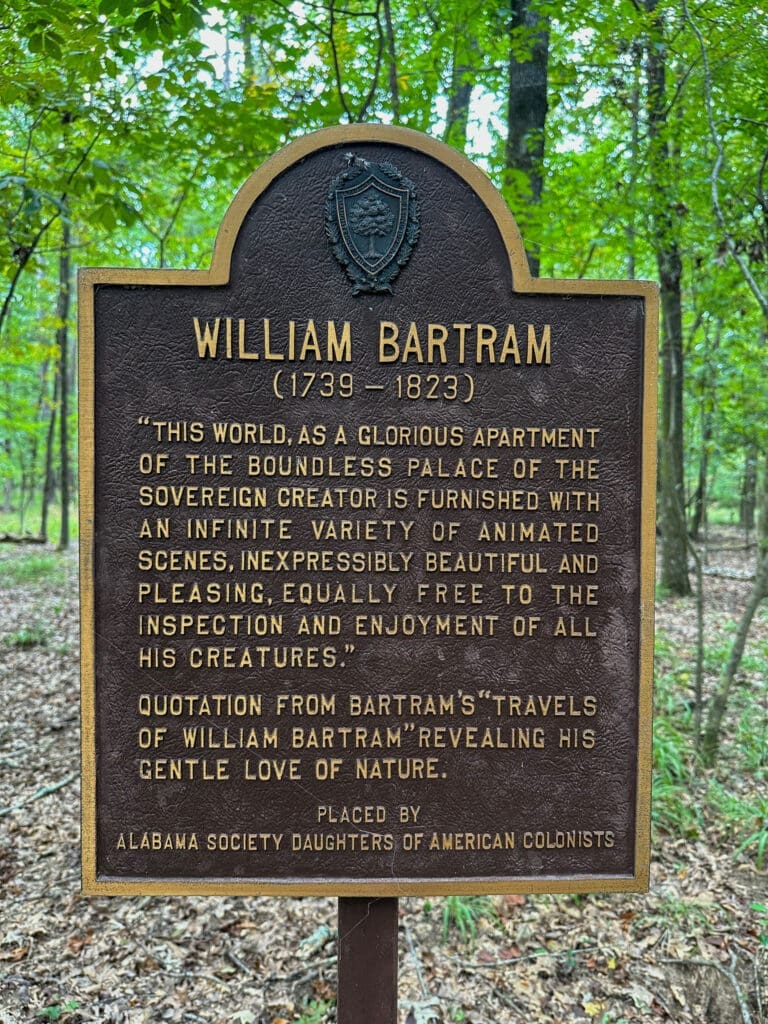
Want to chat about Alabama? Email Wesley here: [email protected]
Instagram is more your thing? Find him here: @theatomicdustbin
See photos from the road and Alabama Ramble updates here: @thealabamaramble

